One of the oldest countries in Europe, Portugal boasts a complex history alongside dramatic landscapes, stunning beaches, fascinating museums, and exquisite cuisine. But it has some surprises, too: natural springs, a village built from boulders, and a chapel made of human skeletons, to name a few. So if you happen to find yourself in this vibrant country, here are some of the best places to visit.
- The beaches in the Algarve
- The palaces and castles in Sintra
- The wineries in the Rio Douro valley
- The Parque Natural da Serra da Estrela
- The vibrant capital, Lisbon
- The Venice of Portugal, Aveiro
- The nine islands of the Azores
- The boulder village of Monsanto
- The wine cellars of Porto
- The Chapel of Bones in Évora
Rentalcars.com
Ready to explore the wild beauty of Portugal? Discover every captivating corner with Rentalcars.com. Rentalcars.com is an international rental portal that takes the hassle out of hiring a car. Get connected with local rental agencies in over 160 countries worldwide and rent in confidence with Rentalcars.com.
The beaches in the Algarve
Located in the south of Portugal, the Algarve region is home to more than 100 spectacular beaches scattered along 155km of golden coastline. Unsurprisingly, this is one of the best places to visit in Portugal if you are looking to hit the waves. The country’s best-known surf spot, Praia do Amado, on the Costa Vicentina, regularly hosts international bodyboarding and surfing competitions. The dramatic sand dunes, cliffs, and rock pools also make this a popular destination with families during low tide.
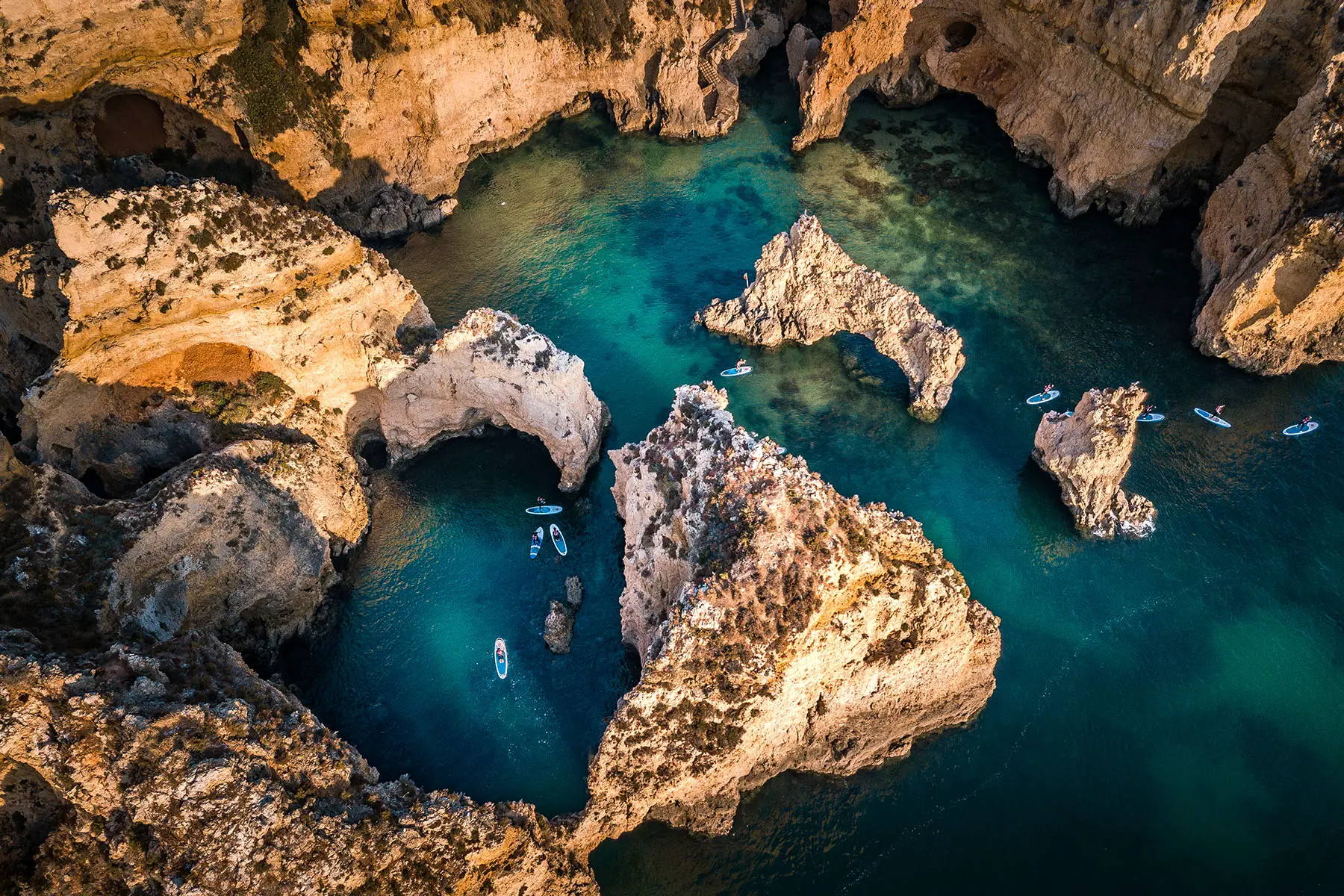
Nearby, the wide-sweeping beach, Praia de Bordeira, attracts nature lovers with its dramatic limestone cliffs, swathes of sand dunes, and 3km of sand. Meanwhile, Praia do Amoreira, just outside the town of Aljezur, is home to an abundance of starfish-filled rock pools that keep little ones entertained. Those looking for a more laid-back vibe can head to Praia do Martinhal, just outside Sagres. This remote beach offers gentle waves and several popular seafood restaurants sheltered behind the rolling dunes.
The palaces and castles in Sintra
Not far from Lisbon, the forested hilltops of Sintra are home to some of Portugal’s most opulent palaces and castles. The most magnificent of these is arguably the gloriously decadent and colorful Palácio da Pena. One of the Seven Wonders of Portugal, the impressive castle is famous for its extravagant Romantic design, which blends together Gothic, Moorish, and Renaissance architecture. The castle was built in the 19th century for Ferdinand II, as the summer residence of the Portuguese royal family. However, it is still used today for state occasions.

Another notable landmark is Palácio Nacional de Sintra, the best-preserved medieval royal palace in Portugal. Its impressive exterior features iconic conical chimneys, columns, and hand-painted tiles that date back to the 15th century. The 9th-century Moorish Castelo dos Mouros is also well-maintained with its tall fortified stone walls and dramatic towers. With so much history contained in these picturesque mountains, it’s not surprising that Sintra is classified as a UNESCO World Heritage Site.
The wineries in the Rio Douro valley
Famed for its production of Port and other wines, the valley of the River Douro is undoubtedly one of the most spectacular places to visit in Portugal. People from all over the world travel to this stunning UNESCO World Heritage Site to sip on wine and admire the vineyard-covered hillsides. Taking a road trip will allow you to visit the wineries and perhaps even stay a night in one of the wine-producing estates (quintas). Be careful, though, the roads here are winding and often stomach-churningly steep.
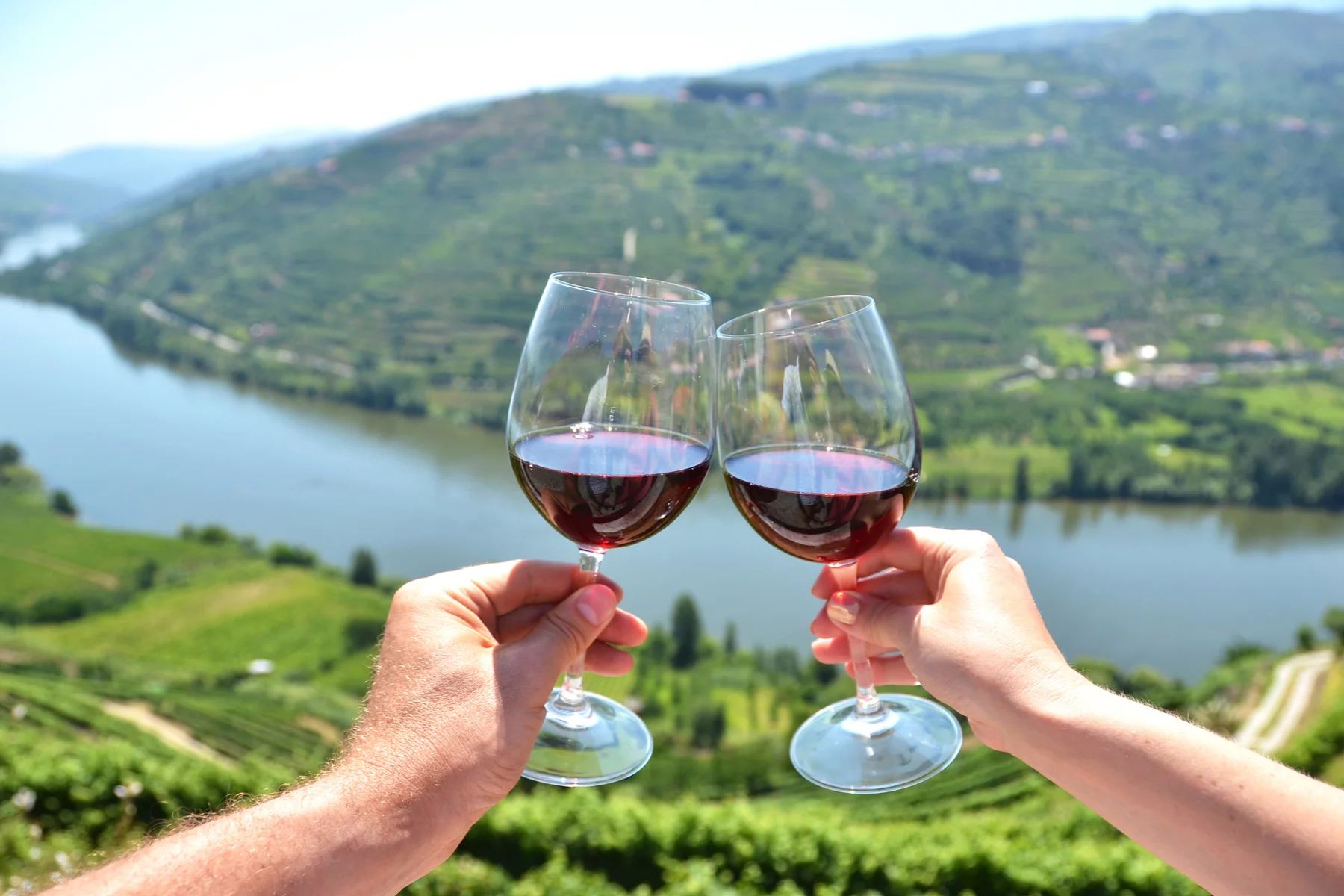
Alternatively, you can hop on a train along the Linha do Douro. This is one of Europe’s most picturesque railway lines which connects Porto with Peso da Regua and other towns. If you prefer a more leisurely adventure, there are numerous cruise operators that tour up and down the river. These often stop at various attractions along the way such as Casa de Mateus, Sé Cathedral, and Bolhão Market.
The Parque Natural da Serra da Estrela
The rugged mountainous landscape of the Parque Natural da Serra da Estrela is the perfect location for hiking. The park is Portugal’s oldest and largest protected area and spans more than 1,000 square meters. It is home to rock-strewn meadows, gushing rivers and waterfalls, terraced fields, and icy lakes. Here you will also discover the country’s highest peak, Torre, which towers at 1,993 meters.
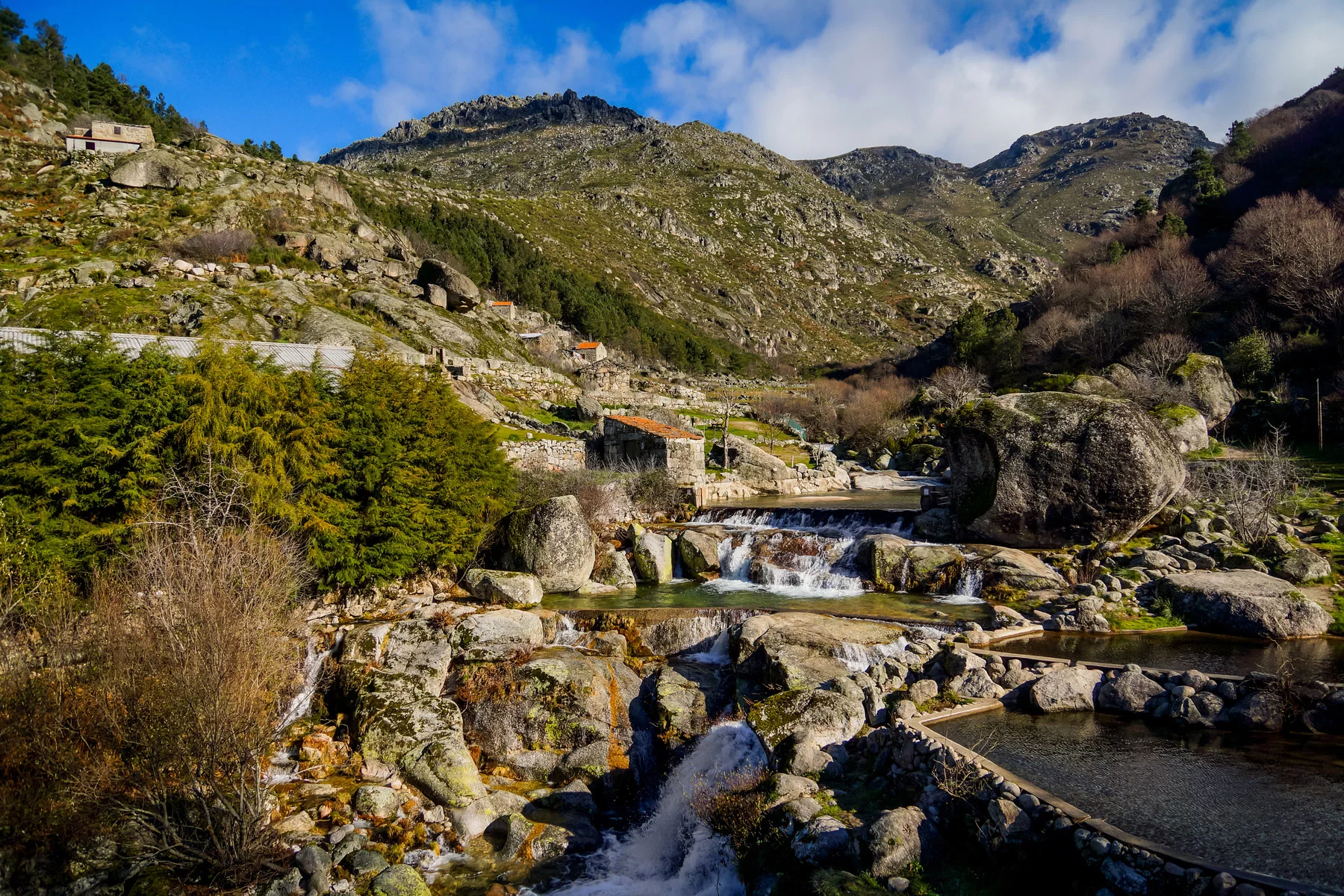
There are many hiking trails in the area, including the popular route from Covilhã up to Torre. During the incline towards the rocky gorges, you will be able to spot casais. These are traditional one-room stone shepherd huts that are thatched with straw. Covilhã has remained the center of wool production in the Iberian region since the 12th century. You can explore its history in the Wool Museum (Museu de Lanifícios). The mountain town of Manteigas, with its cobbled streets and picturesque houses, is also a great base from which to explore this magnificent landscape.
The vibrant capital, Lisbon
Portugal’s illustrious capital is arguably one of the most charismatic cities in Europe and home to some of the country’s most famous landmarks. These include the 11th-century São Jorge Castle and the 16th-century Torre de Belém. When strolling around the cobbled streets, you will stumble upon stunning mosaic-tiled plazas, fairytale castles, and gothic monasteries. This stunning architecture makes Lisbon one of the most popular places to visit in Portugal.
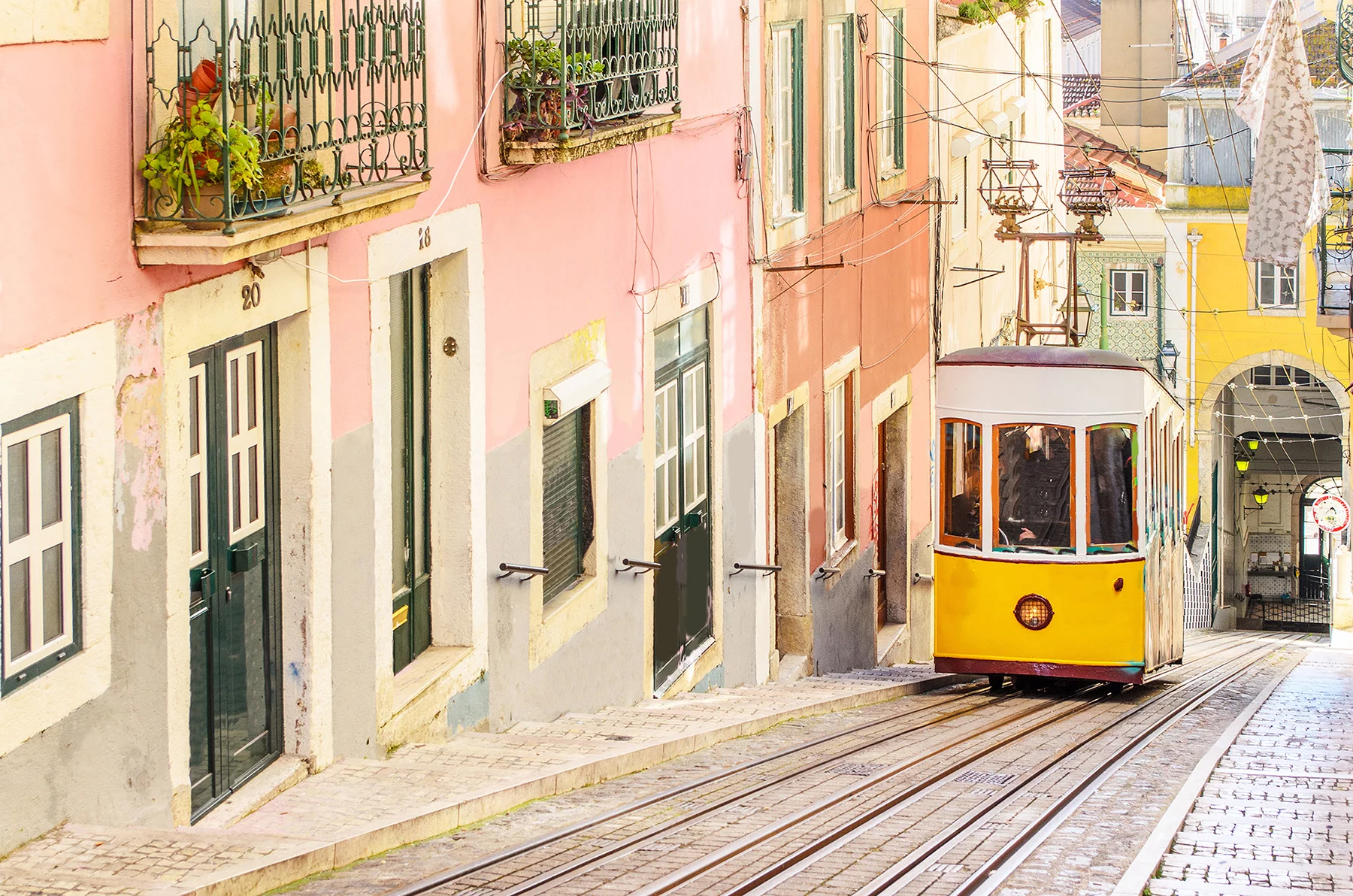
For amazing views of the city, take the 45-meter-high Elevador de Santa Justa to the highest part of Lisbon. Alternatively, hop on Elevador da Glória, a vintage wooden tram that brings you to Miradouro de São Pedro de Alcântara; a beautiful garden with an observation point. You can also soak up the sights by jumping on one of the iconic yellow trams, enjoying a Portuguese custard tart (pastel da belém) in a patisserie, or listening to mournful fado singers on a patio restaurant.
The Venice of Portugal, Aveiro
Often dubbed the Venice of Portugal, the picturesque city of Aveiro is famed for its beautiful canals, Nouveau architecture, and colorful gondolas (moliceiros). Located on the edge of the vast Ria de Aveiro lagoon, this authentic fishing district is home to numerous religious buildings. These include the Cathedral of Aveiro, with its prominent bell tower, and the 15th-century Convento de Jesus. The latter features a lavish tomb made of marble.
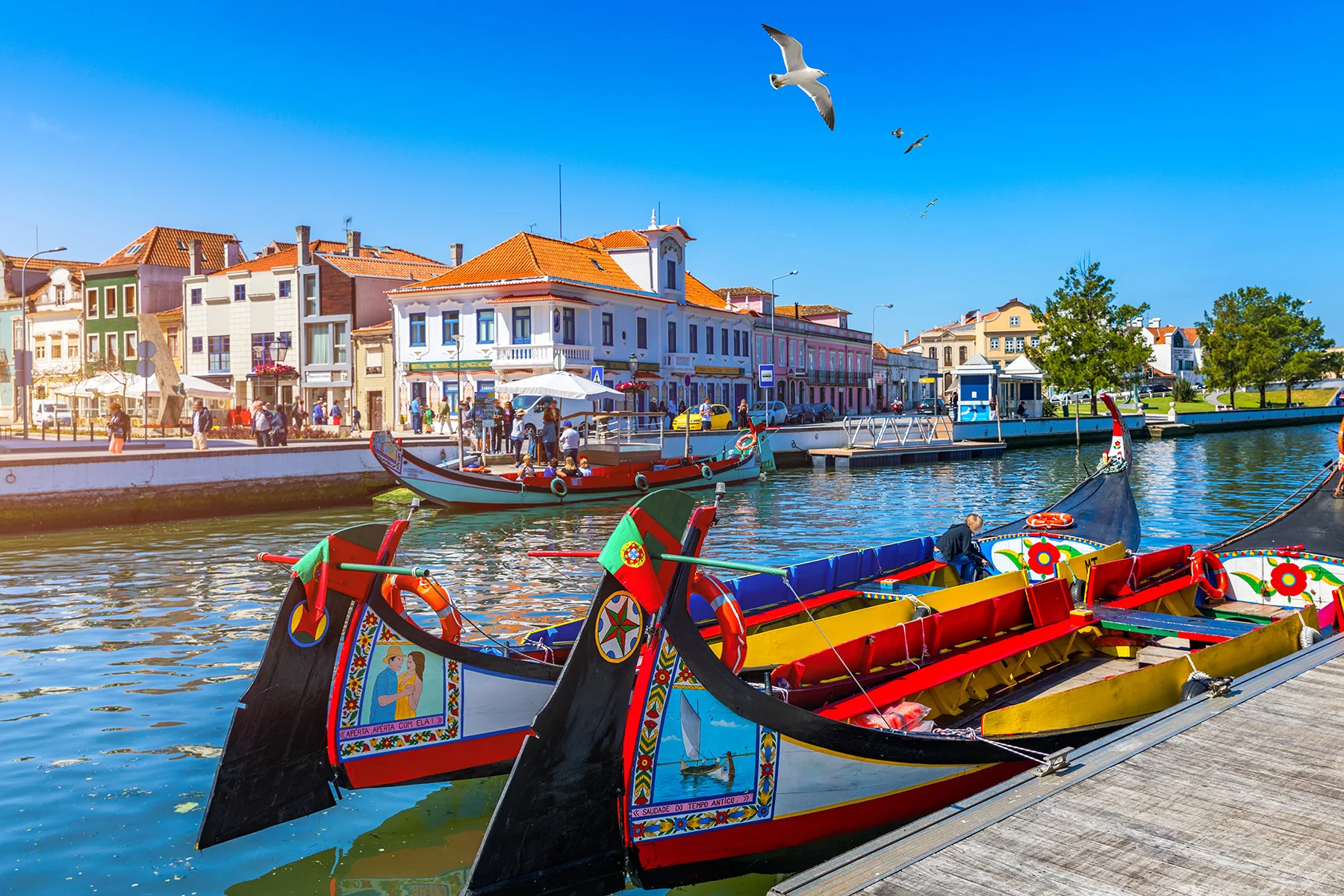
A ride on one of the traditional seaweed-gathering moliceiros will offer you the best views of the town and the São Jacinto Nature Reserve on the salt marshes. Often referred to as white gold, Aveiro salt is famous for its high quality and taste. People traditionally use it to preserve cod (bacalhau), which is a key ingredient in Portuguese cuisine. While there, make sure to visit the lively fish market and pastel-colored Art Nouveau houses lining the canal.
The nine islands of the Azores
Some 1,500km to the west of Lisbon, in the Atlantic Ocean, lie the Azores. This archipelago of nine islands is characterized by volcanic landscapes, green pastures, and one of the best marine habitats in the world. The archipelago is a pit stop for about a third of the world’s species of cetacean. As a result, it is one of the most important places to visit in Portugal for nature lovers.
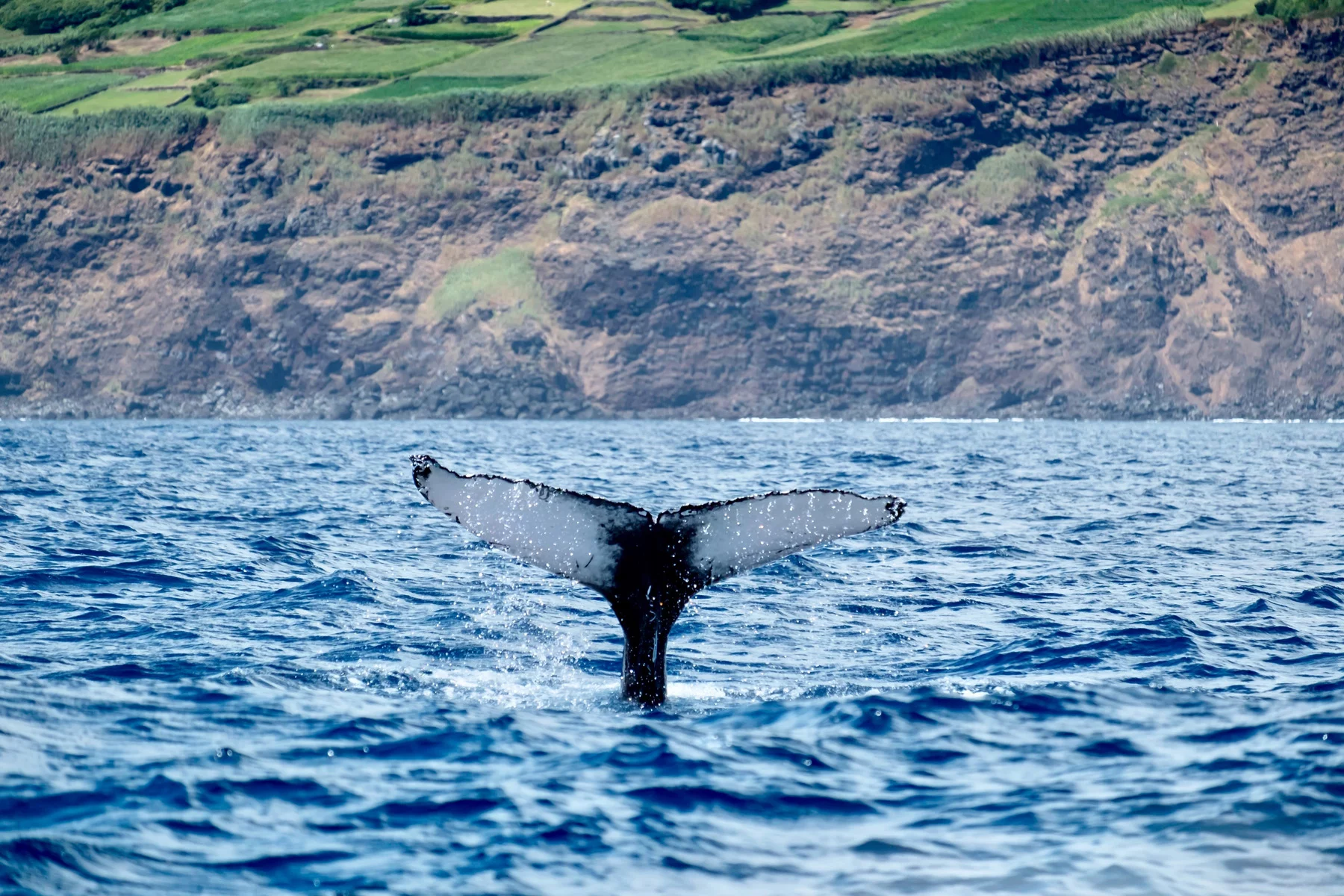
While the islands are a hot spot for diving, hiking, and water sports, they are most famous for whale and dolphin watching. You can see sperm whales, common dolphins, and bottlenose dolphins passing through on migration routes all year round. Blue whales, humpbacks, and orcas are also known to travel these waters between April and June. Several boat tours operate from the larger islands, giving visitors the chance to learn about the area’s diverse marine biodiversity from marine biologists and naturalists. These operators are also committed to responsible whale watching and, depending on which one you take, sometimes offer the chance to bathe in the islands’ natural geothermal springs.
The boulder village of Monsanto
Nestled on the steep mountaintop of Mons Sanctusin in Beira Baixa, the village of Monsanto resembles a setting from The Lord of the Rings. It is famous for its gigantic granite boulders which people have used as floors, walls, and even roofs in houses that date back to 1174. Due to its distinction as a living museum, the village has barely changed in hundreds of years. You will also find the ruins of the medieval Castle of Monsanto here.

The village is also home to the Casa de Uma Só Telha – “the house with only one tile” – which features a roof formed entirely by a single granite rock. Here, visitors can lap up a breathtaking 360-degree view of the surrounding countryside. They can also spot villagers singing with square Moorish tambourines (adufe) or using rag dolls (marafonas) to ward off sorcery. They might also see donkeys carrying passengers up the narrow cobbled streets.
The wine cellars of Porto
Any trip to Portugal wouldn’t be complete without a visit to the city that gave its name to the county’s most famous export, port wine. Located on the mouth of the Rio Douro, Porto is the second-largest city in Portugal and a popular center of culture and entertainment that rivals Lisbon. It boasts a colorful mix of medieval relics, extravagant churches, and wine cellars that are open for tastings.

There are dozens of wine cellars to choose from along the Duoro River; nearly all of which provide guided tours and a selection of different port wines to try. Calém is one of the most famous cellars and invites guests to watch a unique fado concert; the traditional music of Portugal. Meanwhile, Taylor’s boasts a modern museum and stunning terrace offering spectacular views over the city. Espaço Porto Cruz, meanwhile, includes a multimedia center, workshops, and chocolate and cheese tastings.
The Chapel of Bones in Évora
Located at the foot of a mountain range in the wine region of Alentejo, Évora is one of Portugal’s best-preserved medieval towns. It is also home to the 16th-century Capella dos Ossos (Chapel of Bones). The macabre monument is the final resting place of thousands of bodies exhumed from the city’s graveyards in the 16th Century. Some 5,000 skeletons are believed to be cemented into its walls. While it is not for the faint-hearted, it is certainly one of the most unforgettable places to visit in Portugal.

The Chapel of Bones is part of the Igreja de Sao Francisco; an unmissable white church complex located between the Jardim Público and the Praça de Giraldo. The latter was gruesomely used as an execution ground during the Spanish Inquisition. However, it is a good place to start your tour of Évora. From here, you can follow the city’s narrow streets into light-filled squares, and pass fountains and courtyards to discover the Cathedral of Évora. Close by, you will also discover the Corinthian columns of the Templo Romano. This Roman temple was once a medieval fortress and later became a slaughterhouse. You can then make your way to the Igreja Real de São Francisco and the infamous Chapel of Bones.



